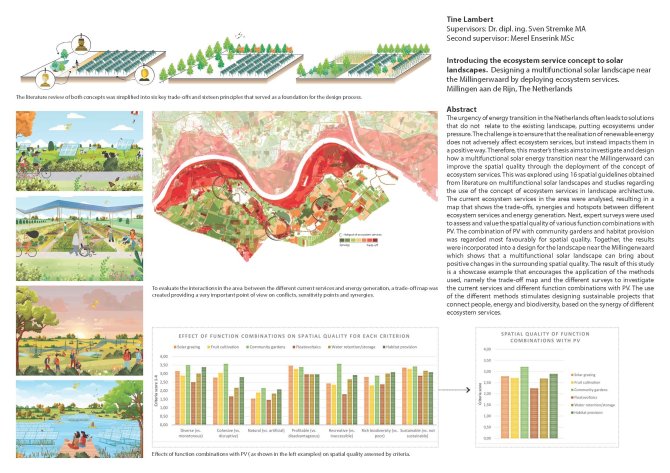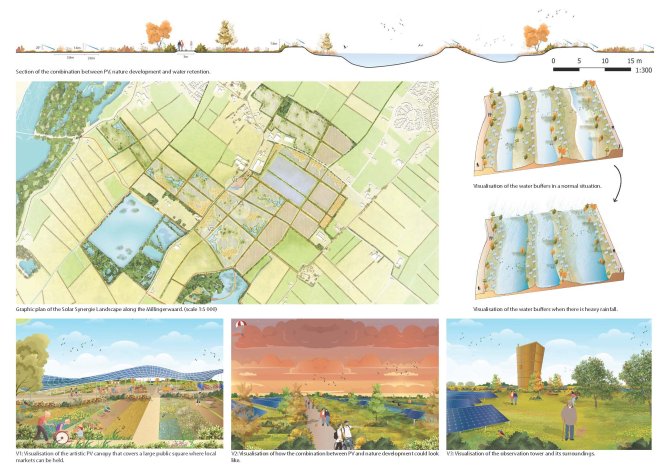Abstract
The urgency of energy transition in the Netherlands often leads to solutions that do not relate to the existing landscape, putting ecosystems under pressure. The challenge is to ensure that the realisation of renewable energy does not adversely affect ecosystem services, but instead impacts them in a positive way. Therefore, this master’s thesis aims to investigate and design how a multifunctional solar energy transition near the Millingerwaard can improve the spatial quality through the deployment of the concept of ecosystem services. This was explored using 16 spatial guidelines obtained from literature on multifunctional solar landscapes and studies regarding the use of the concept of ecosystem services in landscape architecture. The current ecosystem services in the area were analysed, resulting in a map that shows the trade-offs, synergies and hotspots between different ecosystem services and energy generation. Next, expert surveys were used to assess and value the spatial quality of various function combinations with PV. The combination of PV with community gardens and habitat provision was regarded most favourably for spatial quality. Together, the results were incorporated into a design for the landscape near the Millingerwaard which shows that a multifunctional solar landscape can bring about positive changes in the surrounding spatial quality. The result of this study is a showcase example that encourages the application of the methods used, namely the trade-off map and the different surveys to investigate the current services and different function combinations with PV. The use of the different methods stimulates designing sustainable projects that connect people, energy and biodiversity, based on the synergy of different ecosystem services.


